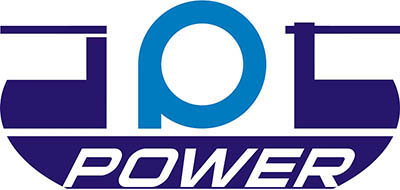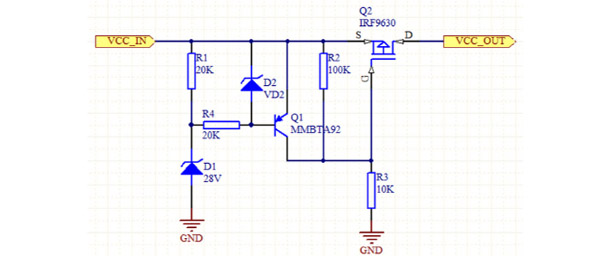The concept of short circuit protection, overload protection, and zero voltage protection are each associated with the rated power of electrical equipment. When the power usage exceeds the rated power, it is considered an overload and the protection mechanism in place to manage this state is called overload protection.
Short circuit protection is in place to prevent short circuits from occurring within the electrical equipment.
Zero voltage protection, also known as loss of voltage protection, is used to ensure that when a power failure occurs, the circuit will automatically trip and prevent the electrical equipment from starting on its own during the next transmission. The purpose of this function is to prevent accidents caused by operators forgetting to cut off the power supply during power failures. This function is commonly found in the contactor control circuit.
1. Short circuit protection
Short circuit faults occur when there is damage to the electrical control line or distribution insulation, load short circuit, or wiring errors, which generate fault currents ten to dozens of times the rated current. This strong electrical force may damage electrical equipment or power distribution lines, generate electric arcs, and even cause fires. To prevent these issues, short circuit protection mechanisms require the power supply to be cut off in a very short time. A common method for achieving this is to connect a series of fuses or low-voltage circuit breakers in the line. The operating current of the low-voltage circuit breaker should be set at 1.2 times the starting current of the motor.
2. Over current protection
Overcurrent refers to the running state of the motor or electrical component exceeding its rated current. Unlike short circuits, overcurrents are generally smaller than short-circuit currents and fall within 6 times the rated current. Overcurrent is more likely than a short circuit in an electrical line, especially when the motor frequently starts and turns forward and backward. If the current value can be restored to normal before reaching the maximum allowable temperature rise, electrical components can still work normally. However, the impact current caused by over current will damage the motor and the instantaneous electromagnetic torque generated will damage the mechanical transmission parts. Therefore, it is necessary to cut off the power supply in time. Over current protection is often achieved through an over current relay. The coil of the over current relay is connected in series in the protected line. When the current reaches its set value, the over current relay will operate, and its normally closed contact is connected in series in the branch where the contactor coil is located to power off the contactor coil. Then, the contactor’s main contact in the main circuit disconnects to cut off the motor power in time.
3. Overload protection
Overload refers to the running state of the motor when the running current exceeds the rated current but is less than 1.5 times the rated current. This running state is within the range of the over current running state. If the motor overloads for a long time, the winding temperature rise will exceed the allowable value and insulation aging or damage. Overload protection requires instantaneous action not affected by the short-time overload impulse current or short-circuit current of the motor. Usually, a thermal relay is used as the overload protection element. When the superheating relay exceeds 6 times the rated current, it needs to be operated after 5 seconds. The heating element of the thermal relay may be burned out before the operation of the thermal relay. Therefore, when using the thermal relay for overload protection, it must be equipped with short-circuit protection devices such as fuses or low-voltage circuit breakers.
1) Loss of voltage protection
If the supply voltage suddenly disappears while the motor is running normally, the motor stops running. Once the power supply voltage returns to normal, it may start by itself, which can cause mechanical damage or even personal accidents. Voltage loss protection prevents the motor from starting or electrical components from working when the voltage is restored. The start and stop control line controlled by contactor and button has the function of voltage loss protection. When the supply voltage suddenly disappears, the contactor coil is cut off automatically, thus cutting off the motor power. When the supply voltage is restored, the contactor self-locking contact is disconnected, so it will not start by itself. However, for manual switch use that cannot automatically reset or travel switch control contactor lines, a special zero-voltage relay is required. Once the power is off, the zero-voltage relay will release, its self-locking circuit will disconnect, and when the power recovers, the motor will not start by itself.
2) Under voltage protection
When the power supply voltage drops to 60%-80% of the rated voltage, the motor power is cut off and stops working. This is called the under voltage protection link. In addition to the under voltage protection function of the contactor with a button control mode, an under voltage relay can also be used. The suction voltage of the under voltage relay is set as 0.8-0.85UN and the release voltage as 0.5-0.7UN. The under voltage relay is connected to the power supply, and its normally open contact is connected to the contactor coil circuit in series. When the power supply voltage is lower than the release value, the under voltage relay will act to release the contactor, and the main contact of the contactor will disconnect the motor power supply to realize under voltage protection.
3) Overvoltage protection
Large inductive loads such as electromagnets, electromagnetic suckers, and DC electromagnetic mechanisms may produce higher induction electromotive force resulting in electromagnetic coil breakdown and damage when turned on and off. Overvoltage protection is achieved by using a resistor, resistor series capacitor, or diode series resistor connected in parallel at both ends of the electromagnetic coil to form a discharge loop.
Please contact JPTPOWER for short circuit, overload and zero voltage protection of the power adapter. More than 10+ years of research and development experience, 200+ standard models for you to choose.


